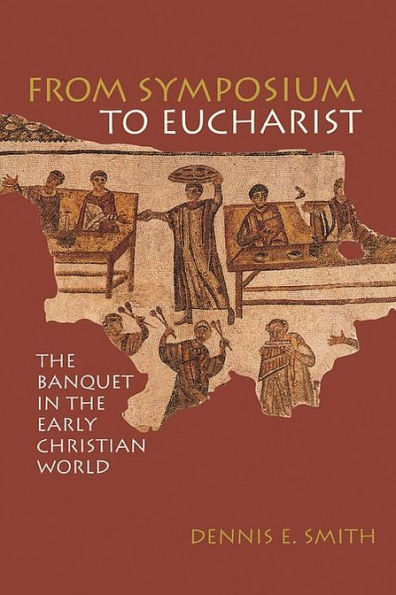Table fellowship in the ancient Mediterranean was more than food consumption. From Plato on down, banquets held an important place in creating community, sharing values, and connecting with the divine.
"The primary change from symposium to eucharist is the evolution of the ritual from the dining table to the altar and from the social world of the banquet to that of sacred law. This change took place rather quickly and can be documented in early Christian literature. It represented a transition from the social code of the banquet to another social code. The banquet tradition was carried on somewhat longer in the form of the Agape, or fellowship meal. This ritual meal co-existed with the eucharist for some time and tended to carry the traditions of the banquet. The eucharist, on the other hand, soon lost its connection with banquet traditions. New Testament texts, however, still maintain that connection and provide a means for the church ever and again to reexamine its origins and renew its theology by recapturing and reconfiguring its own traditions." from chapter 9
Author Biography: Dennis E. Smith is Professor of New Testament at Phillips Theological Seminary (Enid, Oklahoma). He is an editor and contributor to the Storyteller's Companion to the Bible series, as well as co-author of Many Tables: The Eucharist in the New Testament and Liturgy Today (1990). He is the editor of the forthcoming Chalice Introduction to the New Testament.
Table fellowship in the ancient Mediterranean was more than food consumption. From Plato on down, banquets held an important place in creating community, sharing values, and connecting with the divine.
"The primary change from symposium to eucharist is the evolution of the ritual from the dining table to the altar and from the social world of the banquet to that of sacred law. This change took place rather quickly and can be documented in early Christian literature. It represented a transition from the social code of the banquet to another social code. The banquet tradition was carried on somewhat longer in the form of the Agape, or fellowship meal. This ritual meal co-existed with the eucharist for some time and tended to carry the traditions of the banquet. The eucharist, on the other hand, soon lost its connection with banquet traditions. New Testament texts, however, still maintain that connection and provide a means for the church ever and again to reexamine its origins and renew its theology by recapturing and reconfiguring its own traditions." from chapter 9
Author Biography: Dennis E. Smith is Professor of New Testament at Phillips Theological Seminary (Enid, Oklahoma). He is an editor and contributor to the Storyteller's Companion to the Bible series, as well as co-author of Many Tables: The Eucharist in the New Testament and Liturgy Today (1990). He is the editor of the forthcoming Chalice Introduction to the New Testament.

From Symposium To Eucharist

From Symposium To Eucharist
eBook
Related collections and offers

Product Details
| ISBN-13: | 9781451406535 |
|---|---|
| Publisher: | Augsburg Fortress, Publishers |
| Publication date: | 02/01/2003 |
| Sold by: | Barnes & Noble |
| Format: | eBook |
| File size: | 2 MB |
